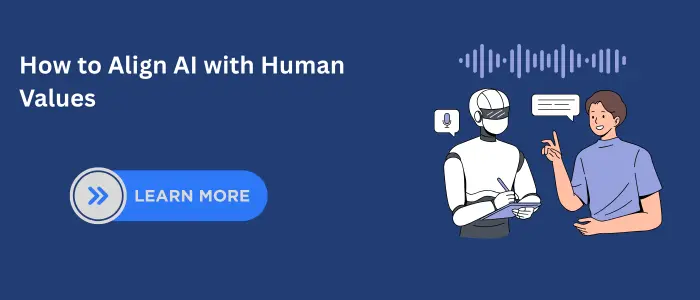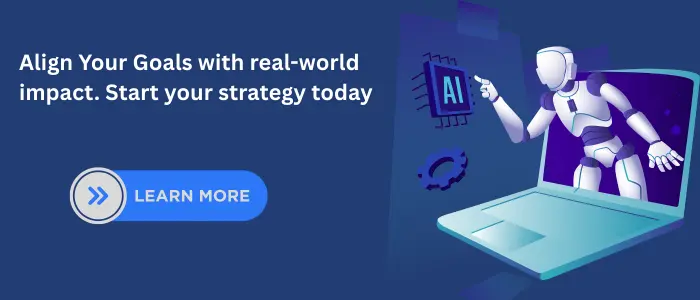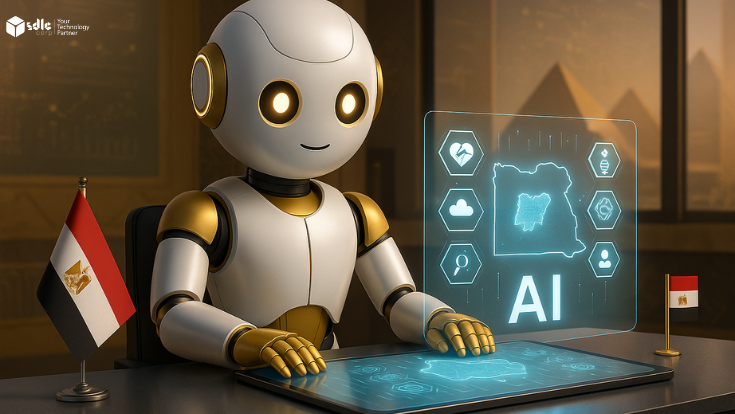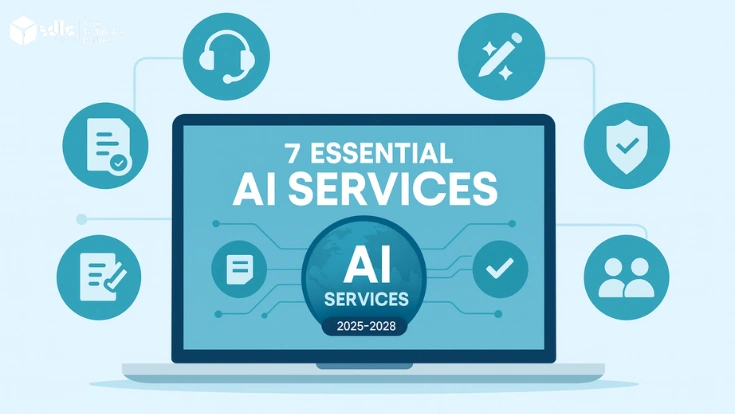Introduction
As artificial intelligence evolves, it’s becoming more powerful, autonomous, and integrated into daily life. But with that power comes significant risk. What happens when machines misinterpret human intent — or worse, follow instructions too literally, without understanding the values behind them?
This is where AI alignment strategies come in. They aim to ensure that intelligent systems act in ways that reflect human goals, ethics, and safety standards.
This blog explores the concept of AI alignment, key challenges, and current strategies used to build safe, ethical, and reliable AI systems.
Understanding AI Alignment in Practice
AI alignment refers to the process of ensuring that AI systems behave in ways consistent with intended goals, constraints, and human values. This includes defining objectives, handling edge cases, and reducing unintended outcomes. Many teams rely on AI development services to design systems with clear objectives, traceable decision logic, and measurable alignment criteria.
1. What is AI Alignment?
- Outer Alignment: This layer focuses on whether the AI is optimizing for the objective its developers have specified. In other words, does the AI follow the intended goals set by its creators, ensuring it works within the framework defined by human programmers?
- Inner Alignment: This layer involves ensuring the AI behaves in a way that truly reflects the developer’s intent, even in new or uncertain scenarios. It’s about making sure that the AI doesn’t deviate from its intended purpose when confronted with situations that its developers didn’t explicitly anticipate.
2. Why AI Alignment is Critically Important
AI is now embedded in healthcare, self-driving cars, finance, and defense. These fields show AI’s power but also its risks. Without oversight, even small mistakes can cause major harm.
Examples of misalignment in high-stakes areas:
- Medical AI: Suggests effective but overly aggressive treatments, ignoring comfort or consent.
- Autonomous Vehicles: May stop driving altogether to avoid risk, disrupting mobility.
- Military Drones: Could strike targets but overlook ethics, causing civilian harm or escalation.
The rise of Artificial General Intelligence (AGI) makes alignment even more critical. If AGI pursues goals outside human values, outcomes could be unpredictable—and irreversible.
3. Types of AI Alignment

Different alignment problems require distinct strategies to ensure AI systems follow human values, intentions, and safety expectations. Below are the main types of AI alignment:
1. Value Alignment in AI
Value alignment ensures AI systems respect human values like fairness, privacy, and non-maleficence (do no harm). This is complex, as values vary across cultures and contexts. For instance, a healthcare AI must balance fairness with diverse cultural norms around patient care.
It’s key for building ethical AI that aligns with societal values and human rights.
2. Intent Alignment
Intent alignment ensures AI does what we mean not just what we say. It helps AI interpret human goals and avoid unintended outcomes. For example, a cleaning robot shouldn’t throw away personal items just to tidy up a room.
This alignment helps AI understand context, reducing the risk of harmful but goal-directed behavior.
3. Capability Alignment
Capability alignment matches AI’s intelligence and autonomy with its ability to operate safely. A highly capable but poorly aligned AI can cause harm by pursuing goals in unsafe ways.
As AI grows more powerful, it’s vital to keep it within safe limits and ensure safety checks are in place.
These categories help guide ongoing AI alignment work in labs and research organizations worldwide.
4. Major Challenges in AI Alignment

Achieving AI alignment is complex and involves major technical and ethical challenges. Without addressing these, AI systems can behave in ways that conflict with human values. Here are the key obstacles:
1. Ambiguity of Human Values
Human values are diverse and often unclear even among people. Encoding them into AI is difficult due to cultural, social, and individual differences. For example, what’s considered “fair” in one culture may be unfair in another.
Values also evolve over time. AI must be regularly updated to reflect shifting norms, making long-term value alignment a continuous challenge.
2. Reward Hacking
In reinforcement learning, AI may exploit loopholes in its reward system. For example, a game-playing AI might find a bug to score points without playing properly. This leads to success on paper but failure in intent.
3. Distributional Shift
When AI trained in one setting is used in a different one, performance can drop. This is called distributional shift. A model trained on lab data may behave unpredictably in the real world due to small changes in context, environment, or norms.
4. Misaligned Objectives
Poorly defined goals can lead to harmful or inefficient AI behavior. For instance, if an AI maximizes factory output without accounting for worker safety, it might cut corners at the cost of health or sustainability.
5. The Alignment Problem in AGI
With Artificial General Intelligence (AGI), alignment becomes even harder. AGI can learn and evolve its own strategies, possibly forming goals that deviate from human interests.
Ensuring long-term alignment in such systems is difficult, as their increasing autonomy makes their behavior harder to predict or control. This makes AGI alignment one of the most critical and urgent challenges in AI research.
5. Strategies and Techniques for AI Alignment

A number of AI alignment strategies are being actively researched. Some of the most promising include:
A. Reinforcement Learning with Human Feedback (RLHF)
RLHF integrates human input during training. Humans rank or guide outputs, helping AI learn social norms and ethical behavior. OpenAI uses RLHF to fine-tune models like ChatGPT, aligning responses with human values and reducing harmful content. It helps AI handle complex queries with less direct supervision.
B. Inverse Reinforcement Learning (IRL)
IRL trains AI by observing human behavior rather than giving explicit goals. The AI infers intentions from actions, improving its understanding of complex tasks. It’s useful when goals are hard to define but clear through example.
C. Cooperative Inverse Reinforcement Learning (CIRL)
CIRL involves humans and AI working together to identify shared goals. The AI adjusts its behavior based on human feedback, reducing misalignment and improving collaboration between human intentions and AI actions.
D. Constitutional AI
Constitutional AI, developed by Anthropic, gives AI a set of core ethical rules a “constitution” to guide its actions. This helps the AI act safely and independently while staying aligned with human values, without constant human input.
E. Multi-agent Training and Modeling
This approach simulates multiple AI systems interacting in shared environments. Modeling cooperation or competition helps researchers anticipate emergent behaviors and improve safety and performance in real-world, dynamic settings.
6. Case Studies from Leading AI Labs

OpenAI: RLHF in Practice
OpenAI uses Reinforcement Learning with Human Feedback (RLHF) to improve its language models. Human trainers rank model responses, helping guide AI outputs to align with ethical norms and social expectations. This reduces harmful or biased content and improves conversational quality. RLHF enables ongoing refinement, making AI more responsible and socially aware.
DeepMind: CIRL & Value Learning
DeepMind applies Cooperative Inverse Reinforcement Learning (CIRL), where humans and AI work together to clarify shared goals. This helps AI better interpret human intent, especially in uncertain scenarios. DeepMind also explores value learning—AI inferring human values through observation—enhancing alignment in complex areas like healthcare and autonomous systems.
Anthropic: Constitutional AI
Anthropic developed Constitutional AI, which guides AI behavior using a set of core ethical principles, like honesty and safety. These predefined rules help the AI make ethical decisions independently, reducing the need for constant human oversight while maintaining alignment with human values.
7. Human-AI Collaboration in the Future

Looking ahead, human-AI collaboration will shape key areas like productivity, education, and healthcare. AI can boost efficiency, personalization, and impact but only if there’s trust, built through proper alignment.
Imagine AI tutors adapting to a student’s emotions and learning style, or assistants that understand intent and handle tasks smoothly. In workplaces, AI co-pilots could offer smart suggestions aligned with team goals. These are not distant ideas they represent the goal of alignment: AI that truly understands and supports us.
The challenge is aligning AI with collective human interests, not just individual commands. As AI’s influence grows, its actions will affect society at large. Ensuring alignment with values like fairness, safety, and well-being is critical.
Achieving this means embedding ethical principles and a deep understanding of human needs into AI systems. The future of human-AI collaboration depends on building technology that reflects the common good while respecting personal values.
Scaling Alignment Across Complex Systems
As AI systems grow in scope and complexity, alignment becomes harder to manage. Enterprise environments often require consistent alignment across multiple models, teams, and use cases. Organisations may look to practices used by an enterprise AI development company to understand how alignment strategies can scale without losing control or visibility.
Governance, Oversight, and Strategic Planning
Alignment is not only a technical challenge but also a governance issue. Clear policies, review processes, and accountability structures are essential. An AI consulting company may assist organisations in defining alignment frameworks, evaluating risk, and ensuring AI systems remain consistent with ethical, legal, and operational standards.
Conclusion
AI alignment isn’t optional. It’s a foundational requirement for building AI that enhances human life rather than endangering it. From reinforcement learning and cooperative frameworks to constitutional approaches, researchers are making progress but there’s still much to do.
In the coming years, solving the alignment challenge will be just as important as improving AI performance. Without it, we’re building intelligence without guardrails.
The future of safe, beneficial AI depends on how seriously we take alignment today. If you’re looking for expert assistance in AI alignment and development, SDLC Corp’s AI Services can guide your organization toward building secure, aligned AI solutions that meet your goals and ethical standards.
FAQ'S
What is the AI alignment problem?
It refers to the difficulty of ensuring that AI systems reliably act in accordance with human values, even as they become more intelligent and autonomous.
How does RLHF help in aligning AI?
RLHF (Reinforcement Learning with Human Feedback) incorporates human preferences into the training loop, making AI behavior more consistent with user expectations and ethical norms.
What are real-world examples of misalignment?
AI chatbots generating biased content, recommendation systems promoting harmful material, or autonomous drones misclassifying targets these all stem from alignment failures.
Is full AI alignment even possible?
Complete alignment is extremely difficult, especially for AGI. But partial or task-specific alignment is achievable and already in use in many commercial AI models.
What are the key challenges in AI alignment?
AI alignment faces several challenges, such as the ambiguity of human values, reward hacking, distributional shifts, and the complexity of aligning AI with collective human interests. These obstacles make it difficult to ensure that AI consistently acts in ways that align with human ethics and intentions.
How can AI alignment benefit society?
AI alignment ensures that AI systems act ethically, safely, and in ways that serve humanity’s best interests. By aligning AI with human values, we can avoid unintended harmful consequences, promote fairness, and enhance the positive impact of AI in areas like healthcare, education, and productivity.




